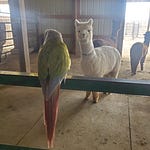The book, like any technology, has motives both written and underwritten. But it is unique in its ability to foster contemplation—sub-motivation, ur-motivation, super-motivation—or what Aquinas would call the return of consciousness to itself. The fixity of the printed sign or image, the friction of the grain, the sequence of the page—these are allies of an ancient human brain hurtling at unholy speeds into a future full of promise and precarity.
*
I wrote the above statement a few months ago in an attempt to qualify the book—as object, archive, art—against the larger landscape of technology in which it stubbornly sub- and persists: to justify the book as a necessary mediation between our selves and the world/bodies we inhabit. I wanted to excuse the book as a centerpiece of professional life: to “publicly declare” its transactional validity.
But a declarative statement or philosophy is no substitute for the unmitigated Person, for person-in-the-flesh. Evidence, yes; eminence, sure; exception, no. All verbal distinction is subsumed in Person; all words uttered by an individual person in the course of a life will return to their source in a name or not at all: a name, a proper noun: a sound confounded with a person.
What am I trying to say? That in considering the import of meaning, the vehicle matters. The complexity of the vehicle—carrying, as it were, our opinions and convictions and rights and feelings—can obscure the origin and inevitable return of meaning to its source. Considering this complicated but ultimately mandatory return, the book is a particularly elegant vehicle and corollary of verbal understanding.
*
In many ways, Rico Lighthouse was the molten core around which the idea for a reader-in- residence formed. A Fort Collins local and paragon of the maker community, he has been showing up to Wolverine Farm since it grew up out of Matter Journal in 2004. But most significantly (in the present context), he would show up and read. Even before Perelandra refilled the publick house with books, Rico was organically holding space for readers by being one. Or such is our view of the matter: that people holding and reading books are better advocates for literature and literacy than any disembodied philosophy or inane marketing strategy ever could be.
Rico and I sat down under a colorful nest of branches in Wolverine Farm’s “Back 40” to celebrate his life as a reader and discuss the role that books might continue playing in human life. The following unedited recording is the first of a series that will simply preserve and proffer a snippet of the insights and delights of the reader-in-residence as they grace our reading chair.
Books mentioned:
Pumpkin Seed Point: Being Within the Hopi (1969) by Frank Waters
The Shepherd of the Hills (1907) by Harold Bell Wright
Lord of the Dawn: The Legend of Quetzalcóatl (1987) by Rudolfo Anaya
October, or Autumnal Tints (1862) by Henry David Thoreau
Morning Rites (2019) by Reed Bye
The Inner Reaches of Outer Space (1986) by Joseph Campbell
The Poetics of Space (1957) by Gaston Bachelard
The Fairytales of George MacDonald (c. 1872)
Technicians of the Sacred ed. by Jerome Rothenberg
Perelandra (1943) by C. S. Lewis
Welcome to the Monkey House (1968) by Kurt Vonnegut
Blue Moon (2019) by Lee Child













Share this post